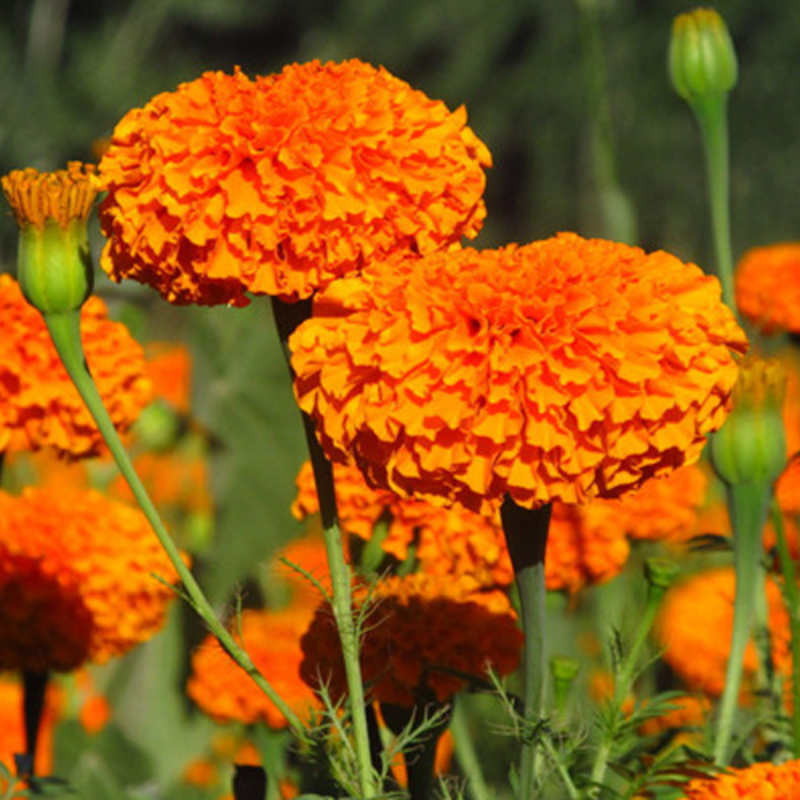- Species and varieties: Marigolds belong to the genus Tagetes and are known for their vibrant flowers. The 'Longevity' variety is specifically bred for extended blooming periods and resilience. Common species include Tagetes erecta (African marigold), Tagetes patula (French marigold), and Tagetes tenuifolia (signet marigold).
- Hybrid or heirloom: The 'Longevity' marigold is typically a hybrid variety, developed to enhance specific traits such as prolonged blooming and disease resistance. Hybrid marigolds are created by cross-pollinating different species or varieties to combine desirable characteristics.
- Pruning and training: Marigolds require minimal pruning. Deadheading spent flowers encourages continuous blooming and prevents the plant from going to seed prematurely. Pinching back young plants can promote bushier growth.
- Fertilization needs: Marigolds are not heavy feeders but benefit from a balanced, all-purpose fertilizer applied at planting time. A light application of fertilizer every 4-6 weeks during the growing season can support healthy growth and abundant flowering. Avoid over-fertilizing, as this can lead to excessive foliage growth at the expense of flowers.
- Hardiness zones: Marigolds are generally suitable for USDA hardiness zones 2-11. They are versatile and can be grown in a wide range of climates, from temperate to tropical regions.
- Climate requirements: Marigolds thrive in full sun and well-drained soil. They prefer warm weather and can tolerate heat and drought conditions. However, they do not perform well in cold or frost-prone areas. Ideal growing temperatures range from 70°F to 75°F (21°C to 24°C).




